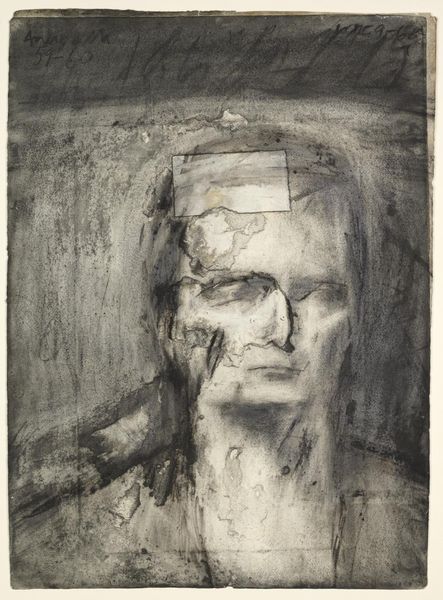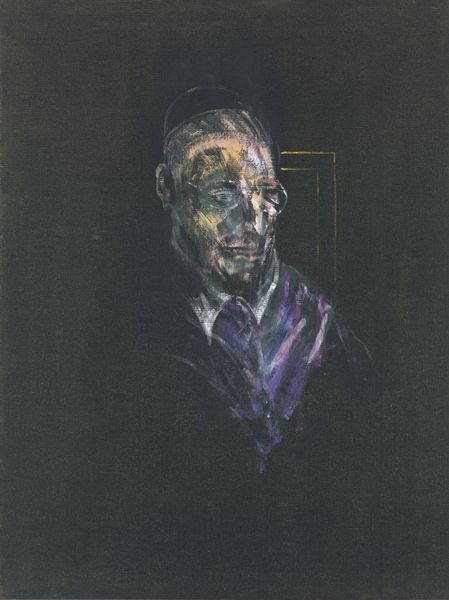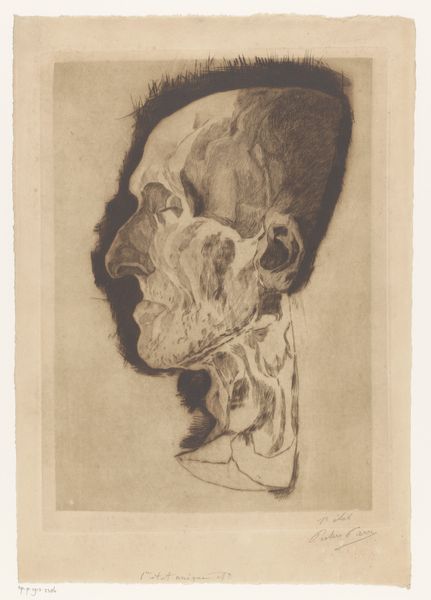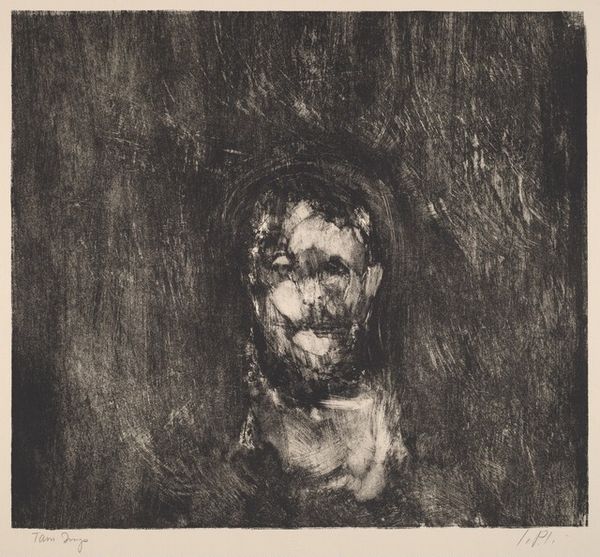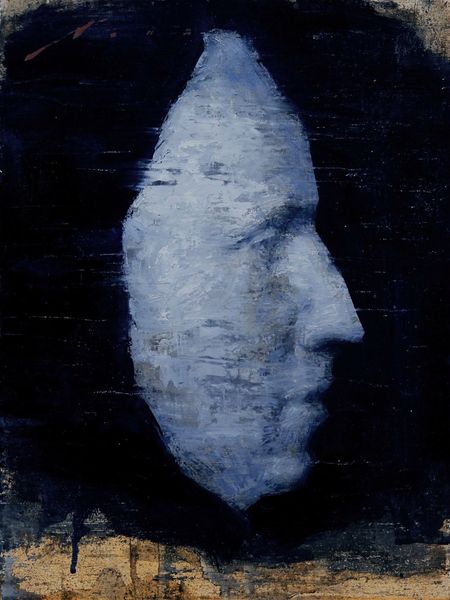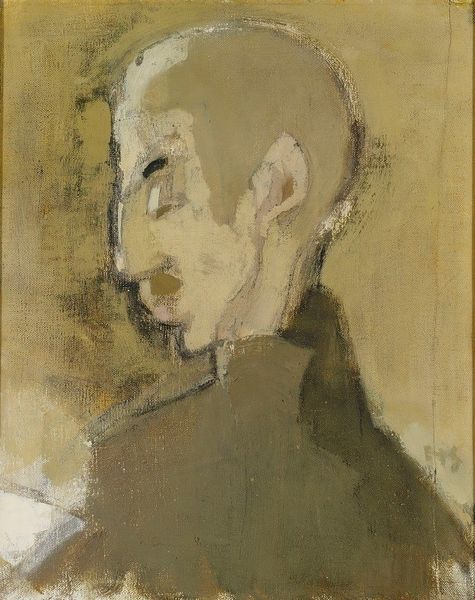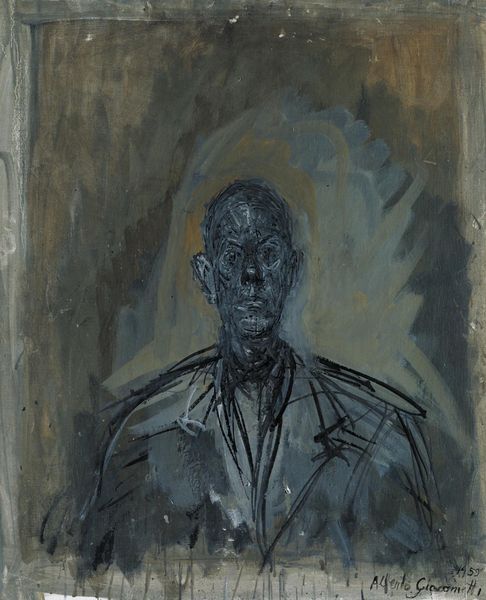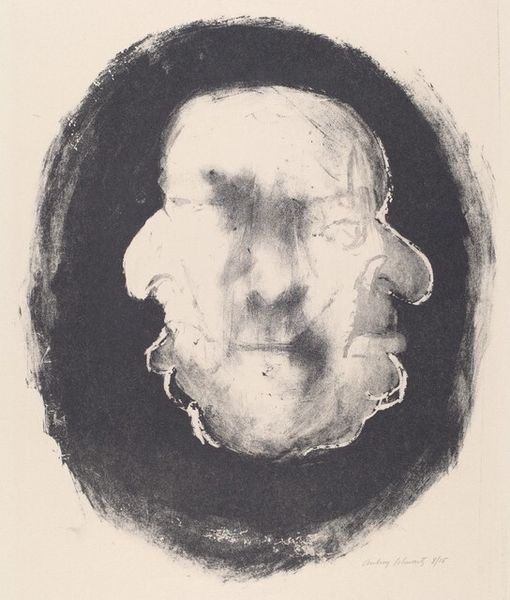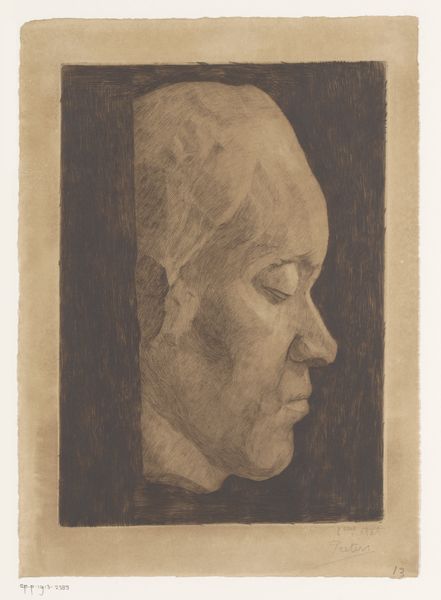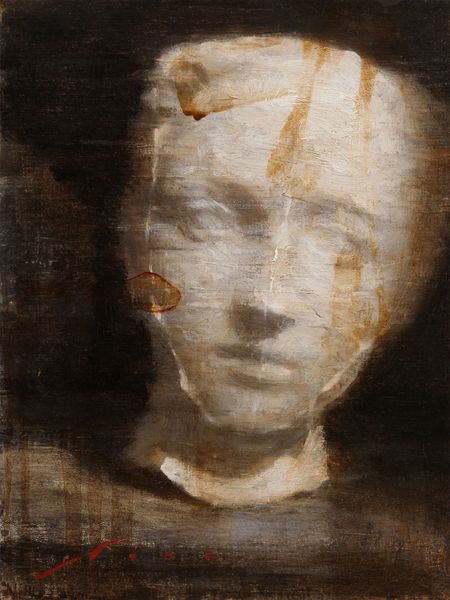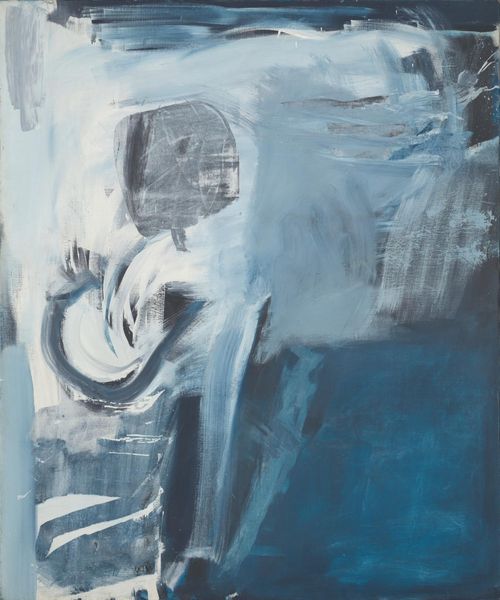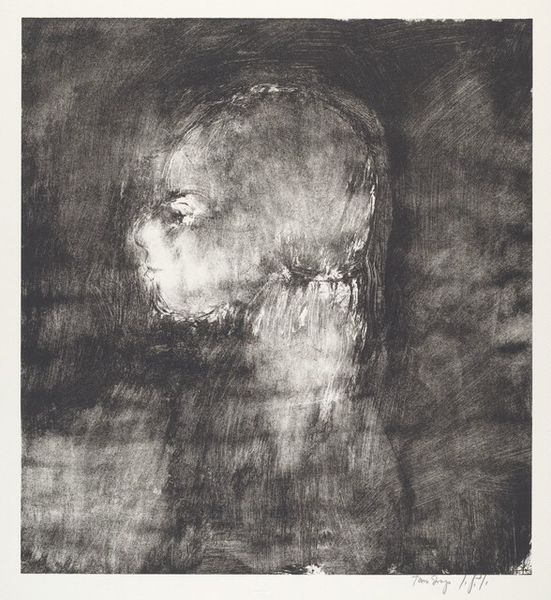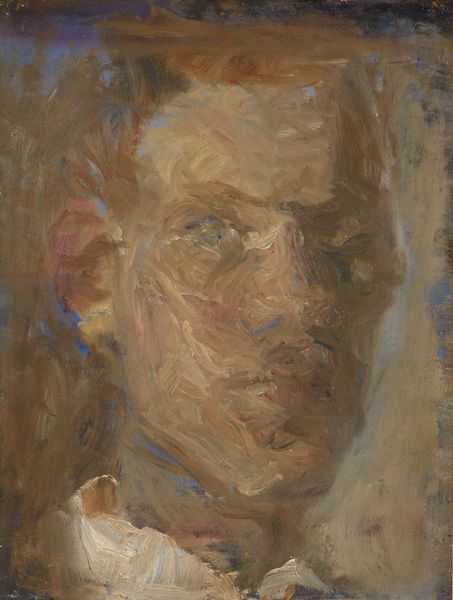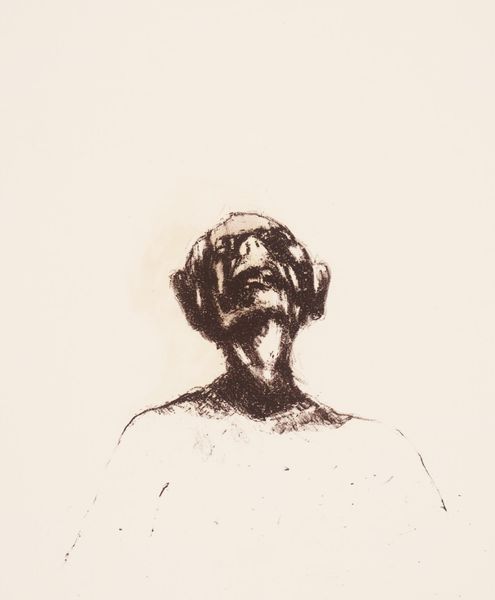
Dimensions: support: 610 x 508 mm frame: 733 x 631 x 70 mm
Copyright: © Estate of Francis Bacon | CC-BY-NC-ND 4.0 DEED, Photo: Tate
Curator: Francis Bacon’s "Study for Portrait II (after the Life Mask of William Blake)," held in the Tate Collections, presents a disquieting image, wouldn't you agree? Editor: Absolutely. The monochrome palette and rough brushstrokes create a somber, almost ghostly presence. It evokes a feeling of profound unease. Curator: Bacon often grappled with existential themes, the fragility of the human form. Observe how the materiality of the paint—the thick impasto—becomes a metaphor for decaying flesh. Editor: And the act of painting itself, the layering and scraping, mimics the processes of creation and destruction. It's not just a portrait; it's a meditation on life and death through material manipulation. Curator: The subject, taken from a life mask, adds another layer. It presents a double remove from reality, a copy of a copy, inviting us to reflect on authenticity and representation. Editor: Indeed, and it makes me think of what Blake himself thought of artistic production, of labor and craft. Bacon has really stripped away any romanticism here. Curator: A fascinating interplay between form and the anxieties of its making. Editor: A stark and memorable image, reflecting on the conditions of artistic creation.
Comments
tate 8 months ago
⋮
http://www.tate.org.uk/art/artworks/bacon-study-for-portrait-ii-after-the-life-mask-of-william-blake-t02414
Join the conversation
Join millions of artists and users on Artera today and experience the ultimate creative platform.
tate 8 months ago
⋮
This is one of a series based on the life mask of poet and painter William Blake. Bacon first saw the mask at the National Portrait Gallery in London, but he also used photographs and, at some point, he even acquired a cast of it. His response to the source is typical of his preference for a mediated image of the body. The painting is more complex than it seems: it is built up with delicate layers of paint against a rich black ground. One commentator wrote, ‘broad strokes of pink and mauve, with which Bacon establishes an equivocation between waxen mask and human flesh, drag pain and loneliness and imperturbable spirit in their wake’. Gallery label, May 2007
